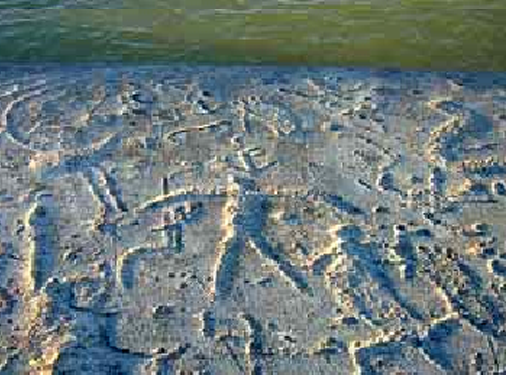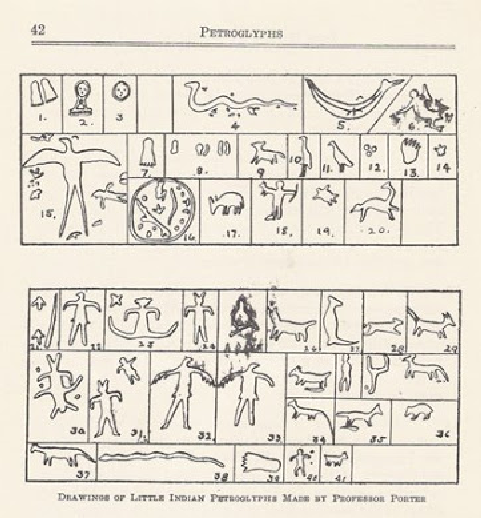INDIAN ROCK PETROGLYPHS
|
1,000 years ago, ancient people left marks on the boulders in the center of the Susquehanna River. What will our legacies by 1,000 years from now?
Although we may never know their exact meanings or significance — it would have taken a lot of time and effort to carve those marks in stone — State archaeologist Donald A. Cadzow believed the petroglyphs (stone carvings) were used for a great variety of serious purposes, as this excerpt from “That they were not scrawls made to occupy idle moments has definitely been proved by a continuation of similar symbols among living groups. Some of them represent mythology and religious practices. … Others are representations of animals or birds and may indicate success in hunting.”
Illustration from Cadzow’s 1934 pamphlet, "Petroglyphs in the Susquehanna River near Safe Harbor, Pennsylvania"
Donald A. Cadzow, an archaeologist who wote a booklet about them for the Pennsylvania Historical Commission in 1934, believed the petroglyphs were used for a great variety of serious purposes. “That they were not scrawls made to occupy idle moments has definitely been proved by a continuation of similar symbols among living groups. Some of them represent mythology and religious practices. … Others are representations of animals or birds and may indicate success in hunting.” Paul Nevin, rock-art researcher and past-president of the Society for Pennsylvania Archaeology, Nevin “thinks the carvings may have conveyed information about ... hunting grounds, ... events or It’s difficult to see the petroglyphs today —they are located in the center of the river below the dam, a dangerous place to be when the operators of the dam open the flood gates.
|


